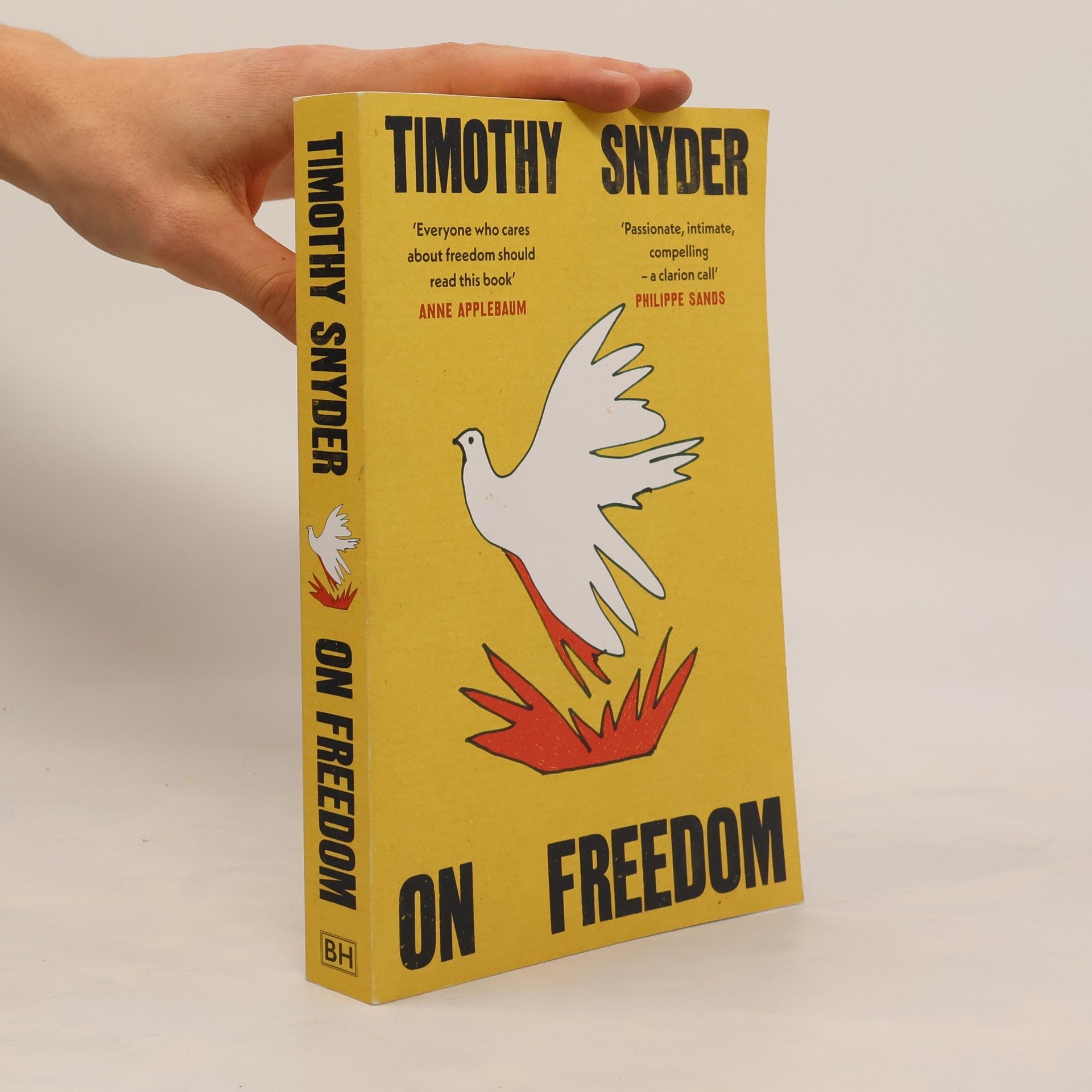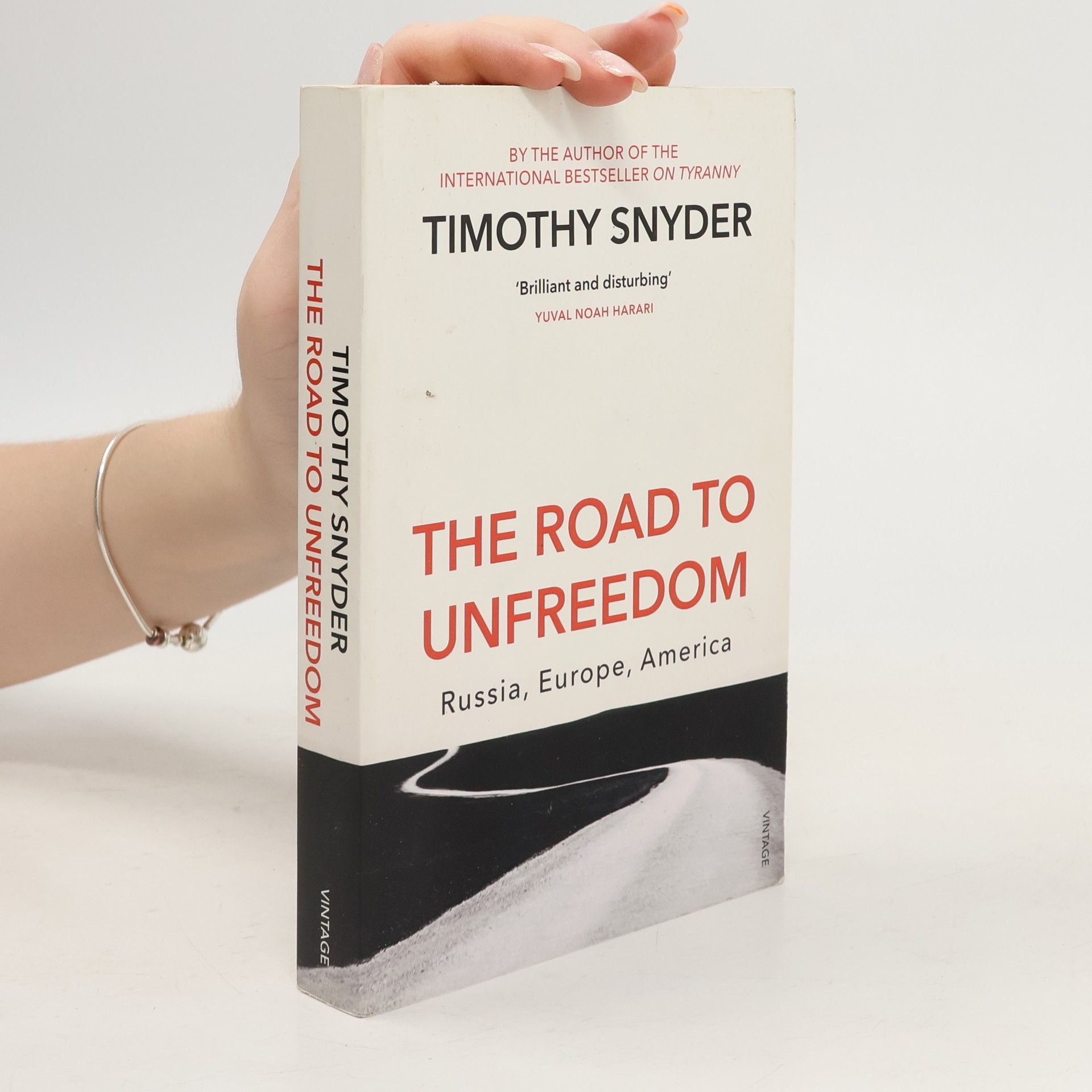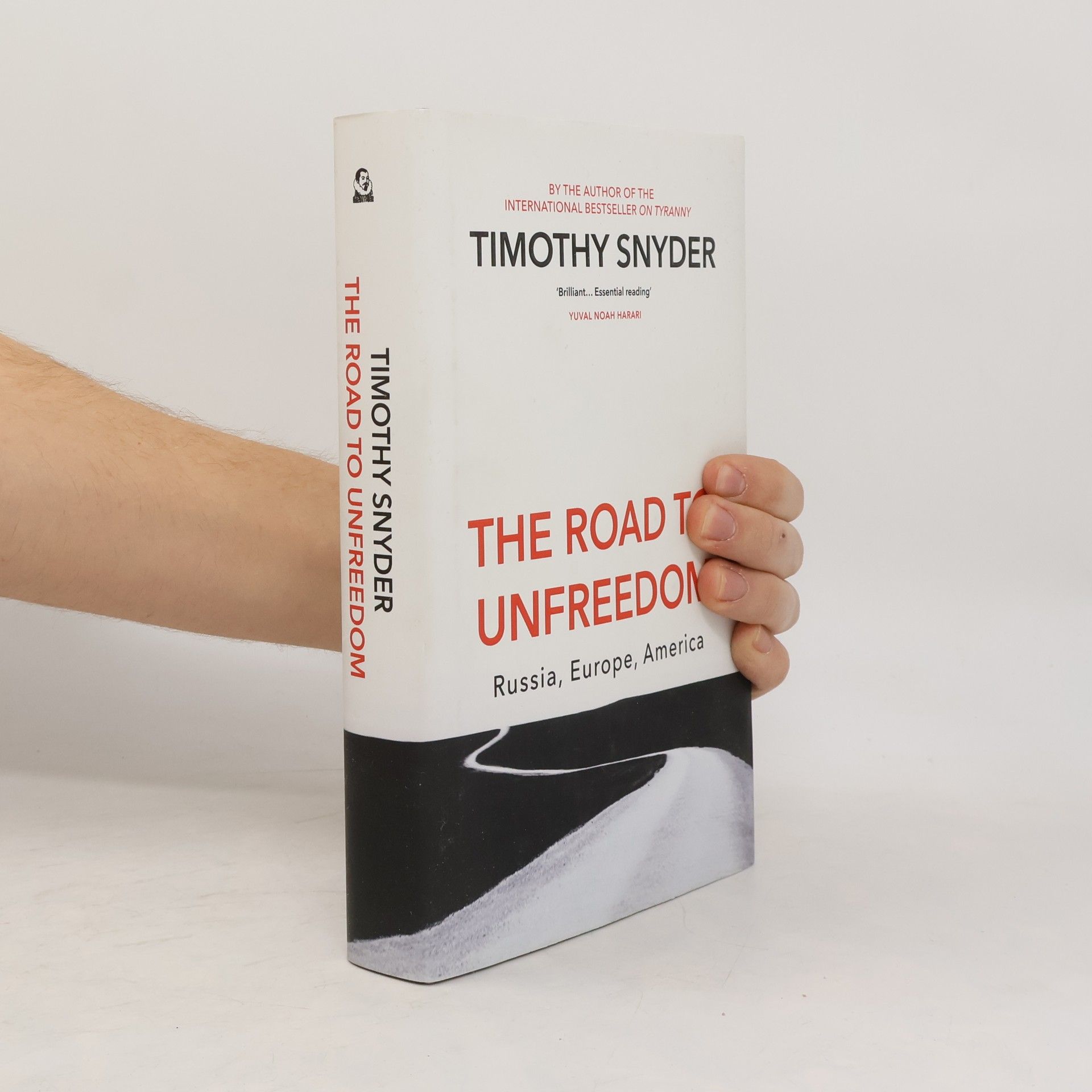Entrambi, io e Judt, sapevamo che il XX secolo poteva essere capito appieno solo da coloro che sono diventati storici perché hanno vissuto quel secolo e condiviso le sue passioni fondamentali: cioè la convinzione che la politica sia stata la chiave di volta sia delle nostre verità che dei nostri miti. Eric J. Hobsbawm Un bellissimo viaggio dentro il Novecento. Un libro originale come il suo autore, storico tra i più brillanti e riconosciuti, mai acquietato fino in fondo. Ebreo ma estraneo a quella comunità. Per un periodo sionista ma poi critico del sogno realizzato. Marxista riluttante e poi liberale dissidente. Professore blasonato ma anche studioso ribelle. L'indole da irregolare attraversa anche le conversazioni di Novecento. Come a dirci che solo un'inquieta estraneità permette uno sguardo più libero sul secolo breve. (Simonetta Fiori, "la Repubblica").
Timothy Snyder Libri







On Tyranny : Twenty Lessons from the Twentieth Century (Graphic Edition)
- 128pagine
- 5 ore di lettura
A graphic edition of historian Timothy Snyder’s bestselling book of lessons for surviving and resisting America’s arc toward authoritarianism, featuring the visual storytelling talents of renowned illustrator Nora Krug “Nora Krug has visualized and rendered some of the most valuable lessons of the twentieth century, which will serve all citizens as we shape the future.”—Shepard Fairey, artist and activist Timothy Snyder’s New York Times bestseller On Tyranny uses the darkest moments in twentieth-century history, from Nazism to Communism, to teach twenty lessons on resisting modern-day authoritarianism. Among the twenty include a warning to be aware of how symbols used today could affect tomorrow (“4: Take responsibility for the face of the world”), an urgent reminder to research everything for yourself and to the fullest extent (“11: Investigate”), a point to use personalized and individualized speech rather than clichéd phrases for the sake of mass appeal (“9: Be kind to our language”), and more. In this graphic edition, Nora Krug draws from her highly inventive art style in Belonging—at once a graphic memoir, collage-style scrapbook, historical narrative, and trove of memories—to breathe new life, color, and power into Snyder’s riveting historical references, turning a quick-read pocket guide of lessons into a visually striking rumination. In a time of great uncertainty and instability, this edition of On Tyranny emphasizes the importance of being active, conscious, and deliberate participants in resistance.
Under Hitler and Stalin the Nazi and Soviet regimes murdered fourteen million people in the bloodlands between Berlin and Moscow. The killing fields extended from central Polads to western Russia. For twelve savage years, on this bloodsoaked soil an average of one million individuals - mostly women, children and the aged - were murdered every year. Though in 1939 these lands became battlefields, not one of these fourteen million was killed in combat. They were victims of a murderous policy, not casualties of war. Int his deeply unsettling and revelatory book, Timothy Snyder gives voice to the testimony of the victims through the letters home, the notes flung from trains, the diaries on corpses. It is a brilliantly researched, profoundly humane and authoritative bok that demands we pay attention to those that history is in danger of forgetting.
On Freedom
- 368pagine
- 13 ore di lettura
Exploring the concept of freedom, the book emphasizes that true liberty involves active goodness rather than merely the absence of oppression. It argues that freedom is not a gift but a shared responsibility, highlighting the importance of solidarity in achieving genuine freedom for all. The interconnectedness of individual and collective freedom is a central theme, suggesting that one's liberty is inherently tied to the freedom of others.
On Tyranny Graphic Edition
- 128pagine
- 5 ore di lettura
Timothy Snyder's New York Times bestseller On Tyranny uses the darkest moments in twentieth-century history, from Nazism to Communism, to teach twenty lessons on resisting modern-day authoritarianism. Among the twenty include a warning to be aware of how symbols used today could affect tomorrow ("4: Take responsibility for the face of the world"), an urgent reminder to research everything for yourself and to the fullest extent ("11: Investigate"), a point to use personalized and individualized speech rather than clichéd phrases for the sake of mass appeal ("9: Be kind to our language"), and more.0In this graphic edition, Nora Krug draws from her highly inventive art style in Belonging--at once a graphic memoir, collage-style scrapbook, historical narrative, and trove of memories--to breathe new life, color, and power into Snyder's riveting historical references, turning a quick-read pocket guide of lessons into a visually striking rumination. In a time of great uncertainty and instability, this edition of On Tyranny emphasizes the importance of being active, conscious, and deliberate participants in resistance
The road to unfreedom : Russia, Europe, America
- 368pagine
- 13 ore di lettura
La 4e de couverture indique : "The past is another country, the old saying goes. The same might be said of the future. But which country ? For Europeans and Americans today, the answer is Russia. In this visionary work of contemporary history, Timothy Snyder shows how Russia works within the West to destroy the West ; by supporting the far right in Europe, invading Ukraine in 2014, and waging a cyberwar during the 2016 presidential campaign and the EU referendum. Nowhere is this more obvious than in the creation of Donald Trump, an American failure deployed as a Russian weapon. But this threat presents an opportunity to better understand the pillars of our freedoms and face the choices that will determine the future : equality or oligarchy, individualism or totalitarianism, truth or lies."
Bloodlands, English edition
- 524pagine
- 19 ore di lettura
Under Hitler and Stalin the Nazi and Soviet regimes murdered fourteen million people in the bloodlands between Berlin and Moscow. The killing fields extended from central Polads to western Russia. For twelve savage years, on this bloodsoaked soil an average of one million individuals - mostly women, children and the aged - were murdered every year. Though in 1939 these lands became battlefields, not one of these fourteen million was killed in combat. They were victims of a murderous policy, not casualties of war. Int his deeply unsettling and revelatory book, Timothy Snyder gives voice to the testimony of the victims through the letters home, the notes flung from trains, the diaries on corpses. It is a brilliantly researched, profoundly humane and authoritative bok that demands we pay attention to those that history is in danger of forgetting.
'A brilliant and disturbing analysis, which should be read by anyone wishing to understand the political crisis currently engulfing the world' YUVAL NOAH HARARI, author of SAPIENS The past is another country, the old saying goes.
Bloodlands
- 524pagine
- 19 ore di lettura
Describes how fourteen million people were murdered by Hitler's and Stalin's regimes in the area between Germany and Russia during the time when both men were in power and examines the motives and methods behind the mass murders.


